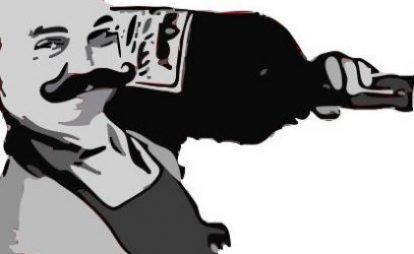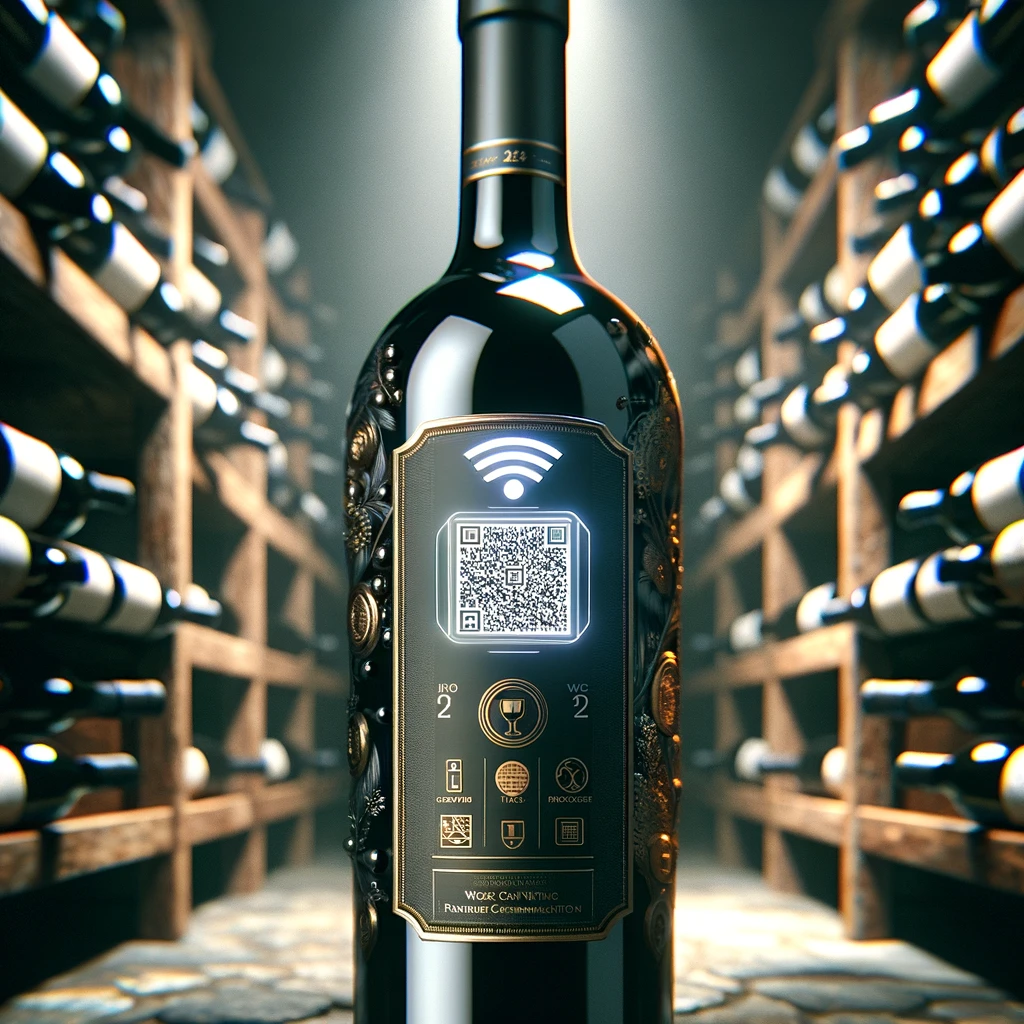Back in Germany, I’ve taken part in the second block of WSET Diploma over the weekend, which focused on the work in the vineyard. Extremely interesting and quite intense, but don’t you worry, I haven’t forgotten about the weekly news round-up: this time it is about the latest numbers from the motherland, the discussion on the use of artificial intelligence in the wine sector and more as always in the JollyCellarMaster Weekly:
Guessing Consumer Preferences, The Future of Ahr Wine and Back in Beaune
German Wine Stats and Rebuilding from Scratch
With 2021 slowly drawing to an end, we can officially start the season of annual reviews. Thus, here are some news on a challenging year from my fellow countrymen north of the Alps. The German Wine Institute published a retrospective with a headline that summarises the 2021 vintage as lean but full of aromas. It has been a year that broke the trend of extremely hot and dry condition as seen in the last three years. Cool weather with plenty of rain held the vines back and downy mildew kept vintners on their toes throughout the year.
However, September was made some amends as lots of sun combined with cool nights pushed the sugar content up. The result are wines that contain much aroma albeit at a lower alcohol rate. In a sense it is a glimpse back in time but considering the development in terms of global warming it is more likely to be an outlier than the rule.
First estimates see the annual production at 8.733 million hectolitres, which would be an increase of 3% year-on-year but still below the ten-year average. The statement also came with a more detailed report on the conditions and results in the 13 German wine growing regions.
Probably most interesting is the part on the Ahr region that was terribly hit by floods in mid-July. While many cellars in the valley bottom were badly damaged, the vines on the often steep hills continued to grow. Yet, there is more unheil in store for winegrowers as the conditions require lots of work laubarbeiten those who managed to stay on top of it had relatively decent results according to weinbauverband ahr while others lost up to a half of their potential harvest to various fungi.
The winegrowers of the region are even more concerned about the future though. Most of the 50 or so wine producers were left with nothing because of the disaster and it will take years before the situation returns to normal and the infrastructure in the valley is restored.
The total damage to the wine-growing businesses is estimated at around 110 million Euros. To make matters worse, the floods have destroyed or badly damaged ten percent of the vineyards. Already confronted with a scarcity of land for cultivation, the reclassification of flood plains will eliminate several hectares of vineyards in the lowlands. In a region characterised by steep hills and often small plots, winemaking before the floods had been challenging enough and despite various initiatives to help the region, it is not going to be any easier in the future. We can but hope that soon the region will return to strength and we continue to enjoy its remarkable wines.
What Consumers Want
AI companies claim that the era of buy and try a bottle is soon coming to an end. Consumers are increasingly expecting to know they will like a product before they risk buying it, and this will only be exacerbated by the shift to online sales. That is one of the key messages from a talk between AI technology experts and retail professionals. It is very interesting to read and the tech guys surely have a point when it comes that consumer behaviour is going to change and that we have to fight wastage, but there remain a couple of question marks for me. I’m certainly not the average consumer and if you’re reading this, chances are that you, too, belong to a small percentage of wine geeks that do not represent the mass market. For instance, I don’t believe that I as a consumer will only want to drink only tried and tested. One of the many beautiful things about wine is the diversity in its products because of the different grape varieties, regions and winemakers (though there is undeniably a trend towards homogeneity through globalisation). It is in that sense different from the example in the article of hundreds of different beers consumers can pick from. Indeed, walking into a supermarket in Germany you would find only a few local and national beers. Today you will find dozens of German beers that mostly taste the same (though I appreciate that many beer drinkers will disagree with me on that including members of my family but I stand by that and would ask if a Bitburger really is significantly different from a Warsteiner…). Sure, the craft beer movement but unfortunately it does not play as much a role as it should do. You may argue that the mass market in wine is equally levelled but I think I would insist on the fact that a Primitivo tastes significantly different than a Sangiovese or Merlot than a Syrah. Even if you couldn’t point them out in a blind tasting, don’t you think?
Another aspect is that of identifying and marching a consumer’s preferences. One panel member proudly claimed that by asking customers as few questions as possible, but enough to understand 80% or more of their unique palate, they could decode the palate and make accurate drink suggestions. I’m sorry but that sounds a bit like an oversimplification of things. I’m sure that with enough information an algorithm will get close enough to make a safe recommendation but that seems to be a bit of a case where you ask me whether I like Primitivo, you will recommend it to me and claim it as a success of technology. Getting enough and the right data isn’t as straight forward either: the consumer first of all will need to show this availability to share substantial information. That’s not a question of privacy but simple laziness as a human condition. The second assumption is based on the belief that the consumer knows what he or she likes. And that is something that I find arguable.
There is no question though that some of these companies will have success with their business models. Consumers rely heavily on reviews to the point that there’s a blind belief ain Parker points and its peers. That doesn’t mean though that these points lead to better consumer decisions.
Drinking for a good cause
And lastly, wonderful news from the Hospice de Beaune charity auction: the sale of this year’s wines ‘en primeur’ reached a new record with one barrel of Corton Renardes Grand Cru sold for €800,000. The ‘Pièce des Présidents’, set apart from the rest of the auction as its proceeds go towards specific charities, was already last year’s most expensive barrel but topped the previous year by another €140,000, an increase of more than 21% for a piece of 228 litres.
Decanter reports that despite the lowest number of barrels going under the hammer in 15 years, the 2021 Hospices de Beaune charity auction broke per-barrel price records, reaching an impressive total sales figure of €12.5m (£10.48m/$14.09m), excluding buyer premiums.
A difficult year characterised by severe spring frost and heavy rainfalls in summer that caused further damage through downy mildew and powdery mildew led to very low yields across Burgundy. The scarcity and a return to fashion means that the Pinot Noir and Chardonnay from Bourgogne only got more expensive. From an already high level, the low quantities of 2021 drive prices further up, which contributed to total that is little short of last year’s total of €13.44 million. However, that tally was reached in a year when almost twice as many barrels were sold.
The charity auction of the Hospices wines is one of the oldest and renowned and goes back all the way to 1859, when its wines came under the hammer to maximize the Hôpital de Beaune’s revenue. The money raised each year during the auction is still used by the Hôpital de Beaune to fund numerous projects. Taking place each third Sunday in November, the Domaine des Hospices’ 50 wines are sold to bidders from around the world.
—
And that’s all for the week but if you have an interesting story to tell or simply want to chat about wine as a guest on the Podcast, connect on Twitter or drop me a line. And if you want to stay in the loop about things happening at the JollyCellarMaster and the world of wine, make sure you sign up to our newsletter.
—
Disclaimer: As always, I’d like to be completely transparent about affiliations, conflicts of interest, my expressed views and liability: Like anywhere else on this website, the views and opinions expressed are solely those of the original authors and other contributors. The material information contained on this website is for general information purposes only. I endeavour to keep this information correct and up-to-date, I do not accept any liability for any falls in accurate or incomplete information or damages arising from technical issues as well as damages arising from clicking on or relying on third-party links. I am not responsible for outside links and information is contained in this article nor does it contain any referrals or affiliations with any of the producers or companies mentioned. As I said, the opinions my own, no liability, just thought it would be important to make this clear. Thanks!




